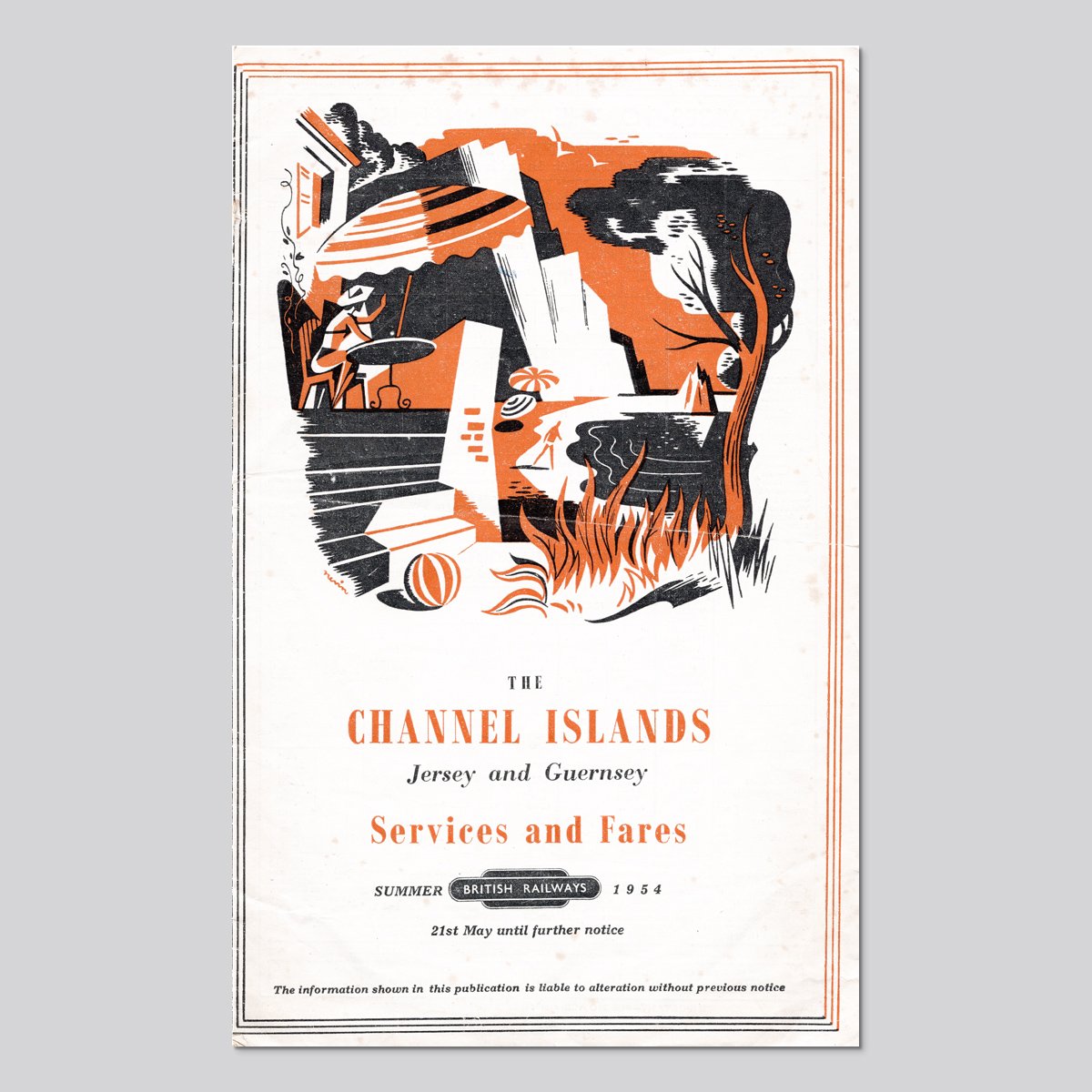The Channel Islands - British Railways (1954)
Year: 1954
Format: Booklet
Illustrator: Pat Nevin (1912-1995)
Client: British Railways
Details: This 1954 British Railways booklet publicises services and fares to the Channel Islands. The artwork is signed by Pat Nevin (1912-1995).
Frederick Walter Nevin, also known as Pat, Paddy, or P.F. Nevin, was a talented comics artist, illustrator, and painter. Born near Ballymena in County Antrim, Northern Ireland, he grew up as the sixth child of seven. From a young age, Nevin showed a natural inclination towards drawing and was encouraged by his father Francis Nevin, who was a cloth exporter. Unfortunately, his father passed away when Nevin was only eight years old.
Nevin pursued his passion for art and studied it for three years from the age of 16. In the 1930s, he gained recognition for his oil paintings of motor racing after attending the Tourist Trophy. As a result, he became the official motor racing artist for The Motor magazine, which allowed him to travel to all the major racing events. He moved to London in 1936 where he worked as a set designer in the British film industry, contributing to films such as Alfred Hitchcock's The Lady Vanishes.
During the Second World War, Nevin joined the RAF, where he served as a photographic interpreter in England and North Africa. After the war, he settled in Pinner with his wife, Angela, and started working as a freelance commercial artist. In the 1950s, he painted various locations such as Scarborough, Jersey, Brittany, Ulster, and the South of France for British Railways. He also created posters for Cunard Shipping Line.
Nevin was a prolific artist who drew comic strips which were published in Eagle, Girl, Swift, Boy's Own Paper, TV Comic, and other publications during the 1950s and 60s. He also drew strips based on popular children's TV programmes such as Bizzy Lizzy, Camberwick Green, Ivor the Engine, The Pogles, The Herbs, and The Woodentops.
In his later years, Nevin retired from commercial art and focused on painting landscapes, seascapes, and motor racing scenes. In the late 1970s, he achieved recognition after Classic Car magazine featured his work. After he passed away, an art gallery in north London was named Nevin House after him.

